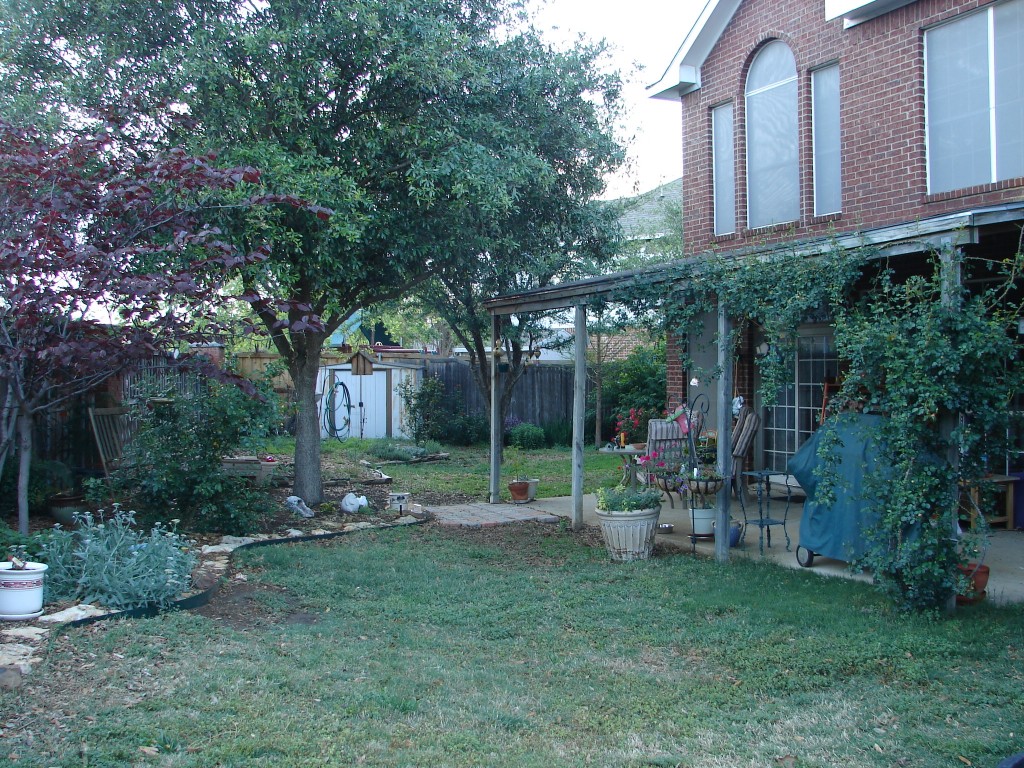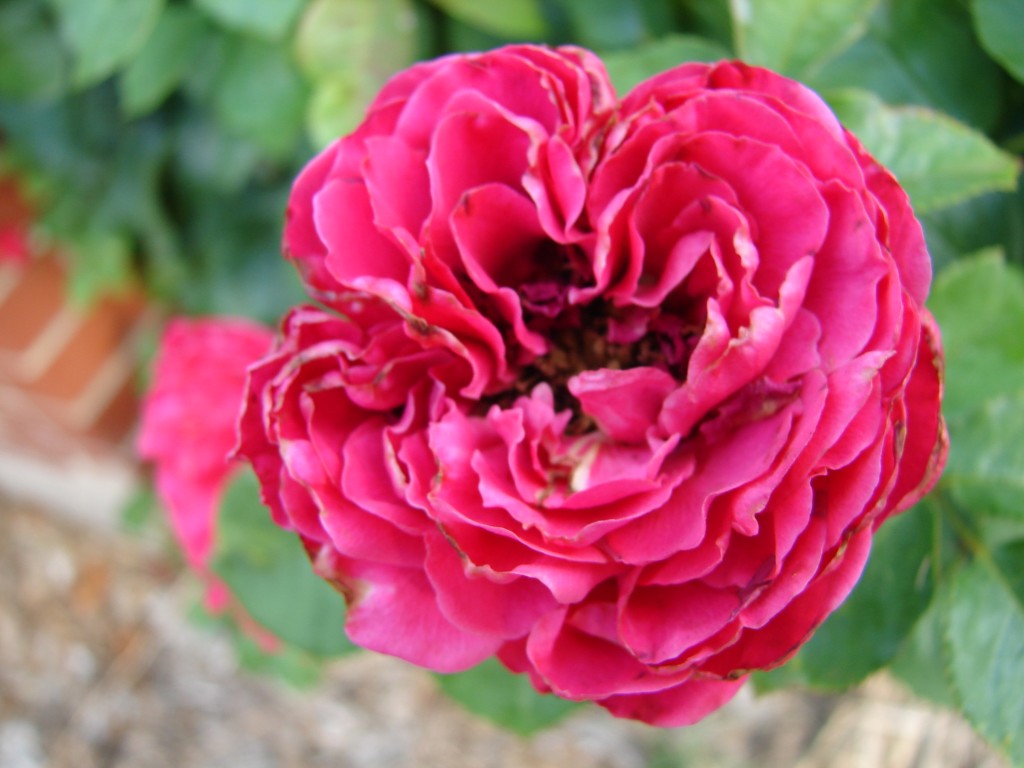
Trees shade the back patio
I went to high school in a suburb of Tulsa – yes, Tulsa is big enough to have several suburbs. We still get back there a couple of times a year. They have a non-profit organization there that has been promoting the preservation of Tulsa’s urban forests since 1976. There are signs everywhere that say “Up With Trees.” I love that about Tulsa.
Trees are absolutely incredible. They completely amaze me. Did you realize that trees make “stuff” (wood) out of thin air? All the carbon that they “breath” in becomes sugars and cellulose. Stuff. From thin air. How is that for incredible? How can anyone not be amazed?
I know everyone has heard about trees and their roll in fighting global warming by now. A single acre of trees can absorb as much carbon dioxide in one year as driving a car up to 8,700 miles. But trees can also help by providing shade resulting in reduced cooling costs in the summer. They also provide shelter from wind to help with heating costs in the winter.
Trees also help filter our water, cool the atmosphere (by evaporative cooling – another cool tree trick!), protect aquifers and land from erosion. What is there not to like? Oh yeah… allergies. My suggestion would be to stay away from cottonwoods. Yes, they’re pretty, but your neighbors may hate you for putting one in.
Another tree to stay away from is the Bradford pear. Yes, that is the tree that builders always seem hell bent on putting in every new yard (because they are cheap) but, in the words of Tom Hanks from “Money Pit”… “We have very weak trees.” We actually had one that we had to have removed last year because a third of it fell off into the cul-de-sac. We were lucky since one third was aimed at the house and the remaining third was over our cars in our driveway. Better just not plant that one.
Here is a list of the 33 best trees for Denton County put out by the Denton County Extension office:
Pecan, Carya illinoensis (70′ x 70′); American elm, Ulmus americana (70’x 70′); Shumard red oak, Quercus shumardii (70′ x 50′);
Sycamore, Platanus occidentalis (70′ x 40′); White ash, Fraxinus americana (60′ x 50′); Bald cypress,
Taxodium distichum (60′ x 30′); Bur oak, Quercus macrocarpa (60′ x 60′); Cedar elm Ulmus crassifolia
(60′ x 40′); Water oak, Quercus nigra (60′ x 40′); American sweetgum, Liquidambar styraciflua (50′ x
30′); Chinkapin oak, Quercus muehlenbergii (50′ x 40′); Escarpment live oak, Quercus fusiformis (50′ x
50′); Osage orange, Maclura pomifera (50′ x 50′); Red mulberry, Morus rubra (50’x 50′); Eldarica Pine,
Pinus eldarica (40′ x 30′); Chinese pistache, Pistacia chinensis (40′ x 40′); Common persimmon,
Diospyros virginiana (40′ x 30′); Eastern red cedar, Juniperus virginiana (40′ x 30′); Lacebark elm,
Ulmus parvifolia (40′ x 40′); Texas ash, Fraxinus texensis (40′ x 30′); Cherry laurel, Prunus caroliniana
(30′ x 30′); Winged elm, Ulmus alata (30′ x 30′); Eastern redbud, Cercis canadensis (25′ x 25′); Crape
myrtle, Lagerstroemia indica (20′ x 15′); Eve’s necklace, Sophora affinis (20′ x 15′); Mexican plum,
Prunus mexicana (20′ x 20′); Possum haw holly, Illex decidua (20′ x 15′); Rough-leaf dogwood, Cornus
drumondii (20′ x 15′); Southern wax myrtle, Myrica cerifera (20′ x 20′); Texas redbud, Cercis
canadensis var. texensis (20′ x 20′); Yaupon holly, Illex vomitoria (20′ x 15′); Carolina buckthorn,
Rhamnus caroliniana (15′ x 10′); Mexican buckeye, Ungnadia speciosa (15′ x 10′).
Check here for more fun facts about trees. And go ahead – hug a tree!
















